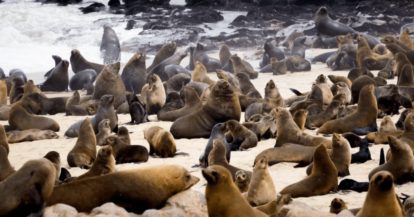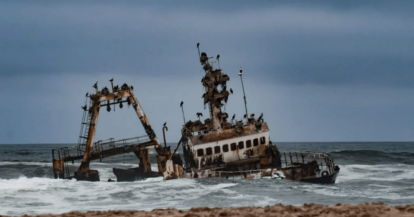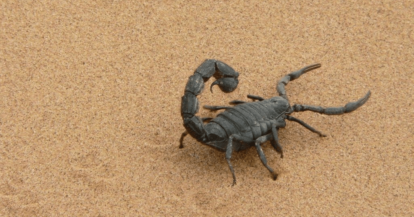Without a doubt, just hearing the words Skeleton Coast invokes images of some of the world’s most dramatic landscapes and this is with good reason. This incredibly vast coastline stretching all the way from Angola in the north to the border with South Africa in the south with the northern Namib Sand sea covering around 16,000 km₂, lying within the infamous Skeleton Coast National Park.
Namibia’s Skeleton Coast is aptly named due to a combination of whale bones and shipwrecks that litter the coastline. The harsh nature of the cold Benguela current that pushes up from Antarctica are famed for its thick fog and unfavourable sailing conditions as the cause of shipwrecks not only from hundreds of years ago, but even as recently as 2007 when the Zeila wrecked just south of Henties Bay.
In addition to being the graveyard of ships and whales alike, the harsh conditions on the Skeleton Coast make for the perfect environment for Namibia’s national flower, the Welwitschia Mirablis, that thrives in this unique environment.
In terms of fauna, Namibia’s Skeleton Coast is home to the Cape Fur seal, and the Cape Cross Seal Colony is one of the world’s largest colonies of the Cape Fur seal with up to 200,000 seals that can be found during their breeding season (November – December), a sure sight and smell to behold. With the incredible population of seals scattered all along the coast brings hungry predators to the coastal areas and sightings of the famed desert lion and brown hyena are not uncommon in the northern parts of the coast.
While the southern reaches of the Skeleton Coast in the Namib Desert is technically not as accessible due to the fact that there is no road along the coast, it’s certainly no less dramatic as a landscape. Where some of the Namib desert’s largest sand dunes descend straight into the Atlantic Ocean a sight that needs to be seen to be believed. If time & wallet permits, a 4×4 adventure to Sandwich Harbour or a scenic flight along the Skeleton Coast are both highly recommended.





